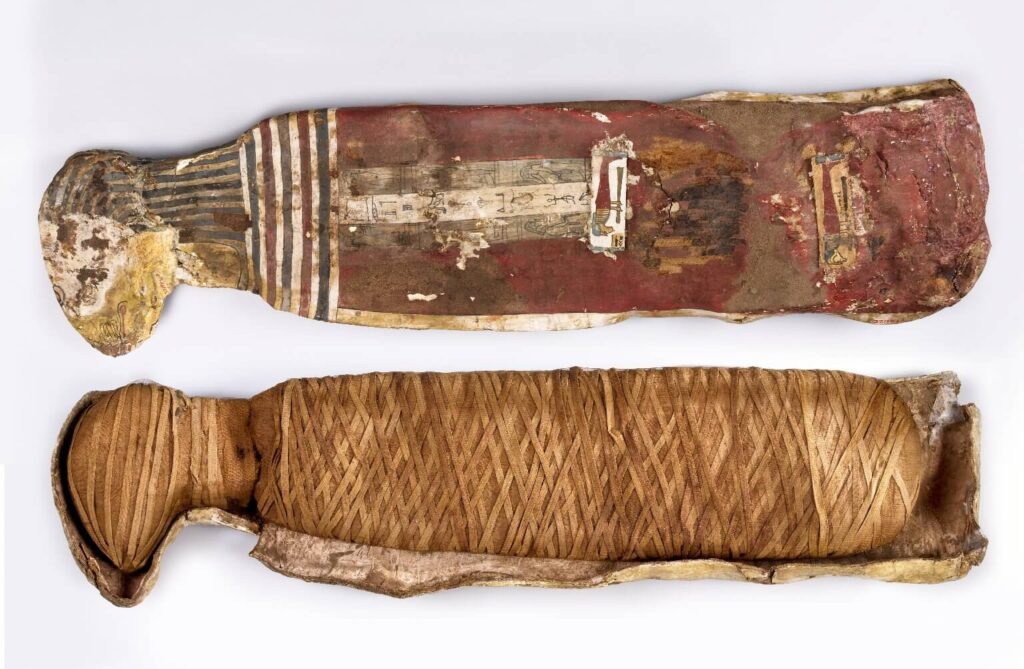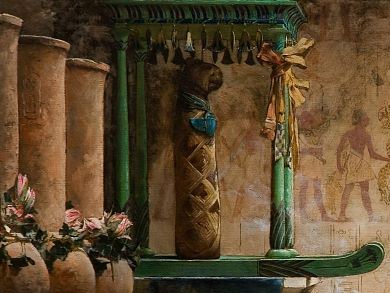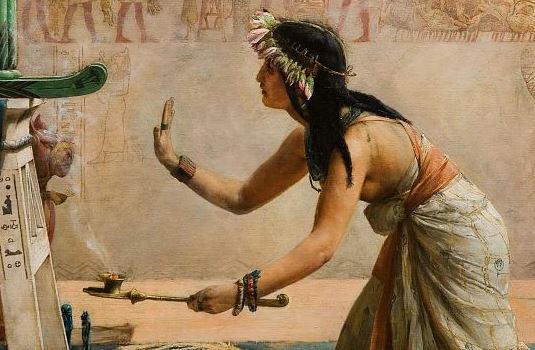Masterpiece Story: L.O.V.E. by Maurizio Cattelan
In the heart of Milan, steps away from the iconic Duomo, Piazza Affari hosts a provocative sculpture by Maurizio Cattelan. Titled...
Lisa Scalone 8 July 2024
7 July 2024 min Read
Here is a Masterpiece Story to honor our beloved cats. The Obsequies of an Egyptian Cat by John Weguelin presents an imaginative interpretation of an ancient Egyptian cat burial.
Many people are familiar with the idea that the ancient Egyptians worshiped cats. While worship may not exactly be the correct word, cats were certainly sacred to the Egyptians. This culture had several feline goddesses, such as the leonine Sakhmet and the cat-bodied Bastet. However, even ordinary house cats were revered, with established mourning rituals to mark the death of a family cat. The mummification of cats was also common practice. This is because cat mummies were offered to Bastet at her temple, Bubastis. Nowadays, mummified cats (and other mummified animals) reside in museum collections around the world.

John Reinhard Weguelin (1849-1927) was a British painter and illustrator who studied at the Slade School of Art in London. His work shows the influence of Sir Lawrence Alma-Tadema, a then-celebrated Academic painter who specialized in elaborate classical scenes. Weguelin, who worked in both oils and watercolors, frequently drew his subject matter from classical antiquity and other ancient cultures.
In The Obsequies of an Egyptian Cat, Weguelin depicts a funerary ceremony for a mummified cat. (“Obsequies” is a fancy term for funerary rites.) The cat mummy appears in a shrine in the upper left corner while a priestess kneels before it with incense and offerings. Paintings like those found in ancient Egyptian tombs appear behind her, while a feline goddess statue lurks at the far right.






Of course, we have no idea what such a ceremony ever would have looked like. Instead, this is simply Weguelin’s imaginative rendition, likely inspired by recently-excavated Egyptian antiquities. This painting is an example of Egyptomania, a 19th-century craze for all things Egyptian. Following Napoleon’s 1798 expedition to Egypt, demand for ancient Egypt-themed art, literature, design, and more swept the Western world.
In 1889, George Alfred Henty wrote a young adult novel called The Cat of Bubastes: A Tale of Ancient Egypt. The book tells a story of an Egyptian boy who must flee for his life after killing a sacred cat. Weguelin created a series of illustrations for the book. Although The Obsequies of an Egyptian Cat was not among them, it seems closely related.






Jacob Brogan. “Why the Ancient Egyptians Loved Their Kitties“. Smithsonian Magazine. Accessed October 11, 2017.
Lot 18 essay. Important British & Irish Art. London: Christie’s Auction House. Accessed June 13, 2001.
“John Weguelin, The Obsequies of an Egyptian Cat“. Auckland Art Gallery Toi o Tāmaki, Auckland, New Zealand.
Joshua J. Mark. “Cats in the Ancient World“. Ancient History Encyclopedia. Accessed November 17, 2012.
DailyArt Magazine needs your support. Every contribution, however big or small, is very valuable for our future. Thanks to it, we will be able to sustain and grow the Magazine. Thank you for your help!